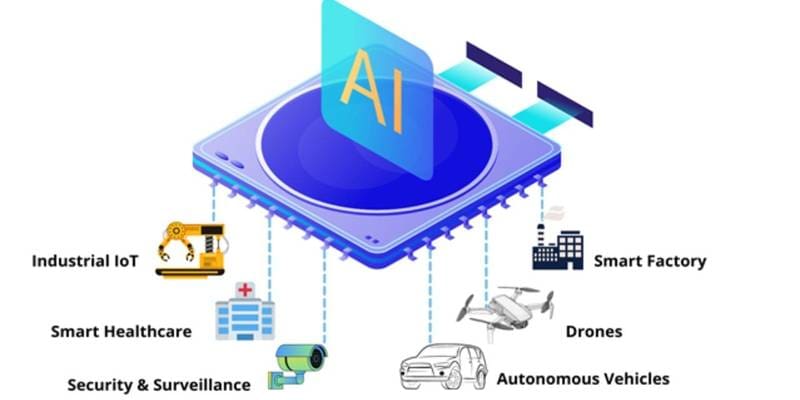The Global Edge AI Market continues its meteoric rise, with a valuation of US$ 5.6 billion in 2022. Forecasts project an impressive compound annual growth rate (CAGR) of 33.5% from 2023 to 2031, driving the market to reach a staggering US$ 76.0 billion by the end of 2031. This exponential growth underscores the increasing integration of artificial intelligence at the edge, empowering devices and systems to process data closer to the source. This convergence has unlocked a plethora of opportunities across various industries, driving the growth of the Edge AI market at an unprecedented pace.
Understanding Edge AI
Edge AI refers to the deployment of AI algorithms directly onto edge devices, such as smartphones, IoT devices, drones, and autonomous vehicles, enabling data processing and analysis locally, without the need for constant communication with centralized cloud servers. By bringing computational capabilities closer to the data source, Edge AI minimizes latency, enhances privacy, and reduces bandwidth consumption, making it ideal for applications requiring real-time responsiveness and data sensitivity.
Market Dynamics
The Edge AI market is witnessing exponential growth, fueled by several key factors:
- Proliferation of IoT Devices: The rapid proliferation of IoT devices across various sectors, including healthcare, manufacturing, agriculture, and smart cities, has created massive volumes of data. Edge AI enables these devices to process data locally, extract actionable insights, and respond in real-time, driving efficiency and innovation.
- 5G Infrastructure: The rollout of 5G networks has significantly enhanced the capabilities of edge computing by providing ultra-low latency and high-bandwidth connectivity. This infrastructure advancement is instrumental in facilitating the seamless deployment of Edge AI applications, particularly in industries such as autonomous vehicles, augmented reality, and industrial automation.
- Privacy and Security Concerns: With growing concerns over data privacy and security, organizations are increasingly turning to Edge AI solutions to process sensitive data locally, mitigating the risks associated with transmitting data to centralized servers. By keeping data within the confines of edge devices, Edge AI enhances privacy protection and minimizes exposure to potential cyber threats.
- Demand for Real-time Insights: In sectors such as healthcare, finance, and retail, real-time insights are invaluable for making critical decisions promptly. Edge AI empowers organizations to analyze data instantaneously, enabling timely responses to dynamic situations and gaining a competitive edge in the market.
Market Segmentation
The Edge AI market can be segmented based on various parameters, including:
- Deployment Model: This includes on-premises deployment, cloud-based deployment, and hybrid deployment models, catering to the diverse needs and preferences of businesses across different industries.
- Verticals: Edge AI applications span across a wide range of verticals, including healthcare, manufacturing, automotive, retail, agriculture, and smart cities, each with unique use cases and requirements.
- Components: Components of the Edge AI ecosystem encompass hardware (edge devices, sensors, processors), software (AI algorithms, frameworks, development tools), and services (consulting, integration, support), contributing to the holistic growth of the market.
Challenges and Opportunities
Despite the promising prospects, the Edge AI market faces several challenges, including:
- Resource Constraints: Edge devices typically have limited computational resources, such as processing power, memory, and energy. Optimizing AI algorithms to operate efficiently within these constraints remains a significant challenge for developers.
- Interoperability and Standards: The lack of interoperability and standardized protocols across edge devices hinders seamless integration and scalability of Edge AI solutions, posing challenges for ecosystem stakeholders.
- Data Governance and Compliance: Ensuring compliance with data governance regulations and standards, such as GDPR and HIPAA, while processing data at the edge presents legal and regulatory challenges for organizations.
Future Outlook
The Edge AI market is projected to witness robust growth in the coming years, driven by advancements in AI algorithms, proliferation of edge computing infrastructure, and increasing demand for real-time insights across various industries. As organizations continue to prioritize agility, efficiency, and data privacy, Edge AI will play a pivotal role in shaping the future of computing and unlocking new frontiers of innovation.
These insights are based on a report on Edge AI Market by Transparency Market Research
Note: We would be also interested in sharing an exclusive guest article based on our research findings.

